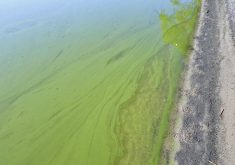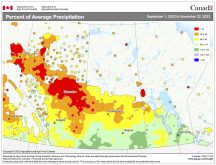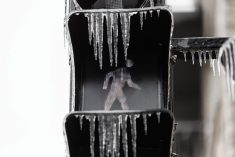You may find yourself feeling a little unsettled with the absence of major flooding this spring. Could this be a sign that we expect floods in the Red River basin to be more rule than exception?
If one looks at the last century or two, it appears that flooding has been the rule in the basin in the sense that few decades have escaped significant flood events. In the last 50 years or so, flooding has become an even more common event. The number of major floods during these years, as listed by three recent studies, totals 18. That’s a big flood in more than a third of the years. If we add lesser flood events, the picture of flooding being the rule becomes even clearer.
Read Also

June brings drought relief to western Prairies
Farmers on the Canadian Prairies saw more rain in June than they did earlier in the 2025 growing season
In the last 12 years alone, together with the major spring floods of 2006, 2009, 2010, 2011, the following years have also seen damage in the basin from excess waters:
- 2000: significant spring damage in Fargo-Moorhead following a severe spring rainstorm,
- 2002: damaging summer flooding on the Minnesota Wild Rice and the trans-boundary Roseau and Pembina rivers,
- 2004: late-spring flooding from Mayville-Portland, N.D., to the Canadian border,
- 2005: record-high summer stage and duration levels on the Red River,
- 2007: wet spring and summer conditions causing crop losses in areas of the basin,
- 2008: spring flood and wet fall conditions damaging to crops.
That means we’ve had basin flooding in 10 of the last 12 years.
Unless we think that we are home free with 2011-12’s unusually dry fall and winter, we need to keep our eyes on the signs or “barometers” of water in the basin.
These barometers are the areas of the basin closed to its natural drainage system. The most striking instance is Devils Lake, where water levels remain at record levels despite the basin’s dry spell.
In the last few years, water levels have also risen in other parts of the basin, in particular those Prairie pothole areas in the southern basin where the potholes have become lakes and roads have disappeared or been built up or rerouted.
But, even if these areas see reduction in water levels as a result of drainage projects or a dry spell, water always seeks the lowest level. The natural water levels of these areas still signal something of the potential for flooding in the Red River basin. That potential appears to suggest flooding as a continuing rule rather than exception.


















